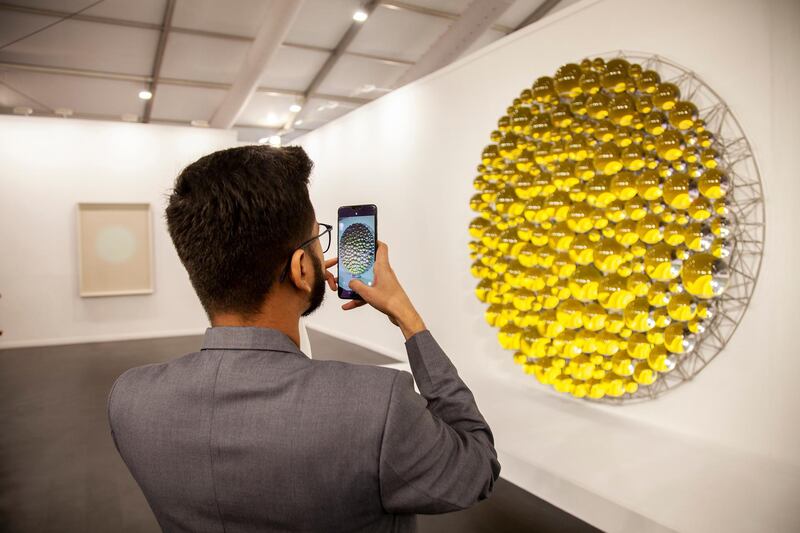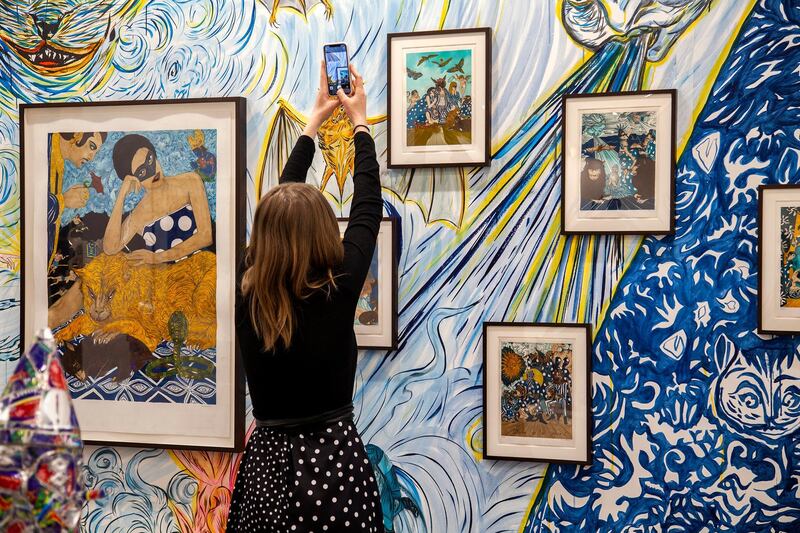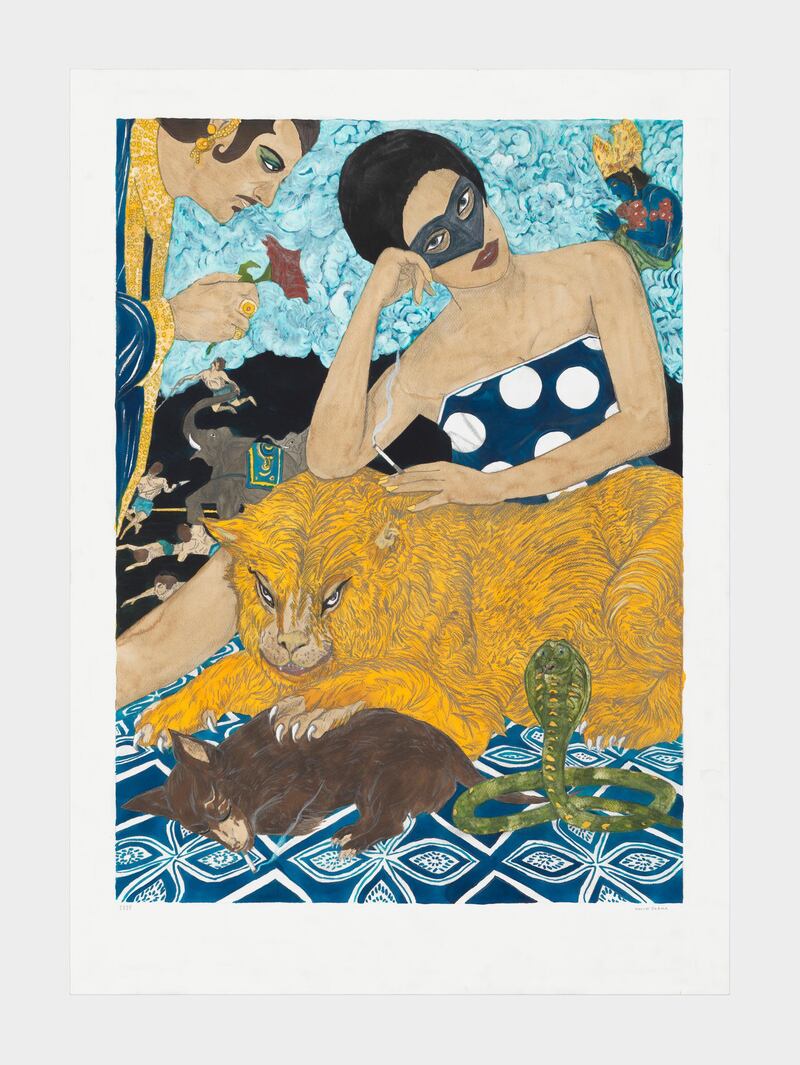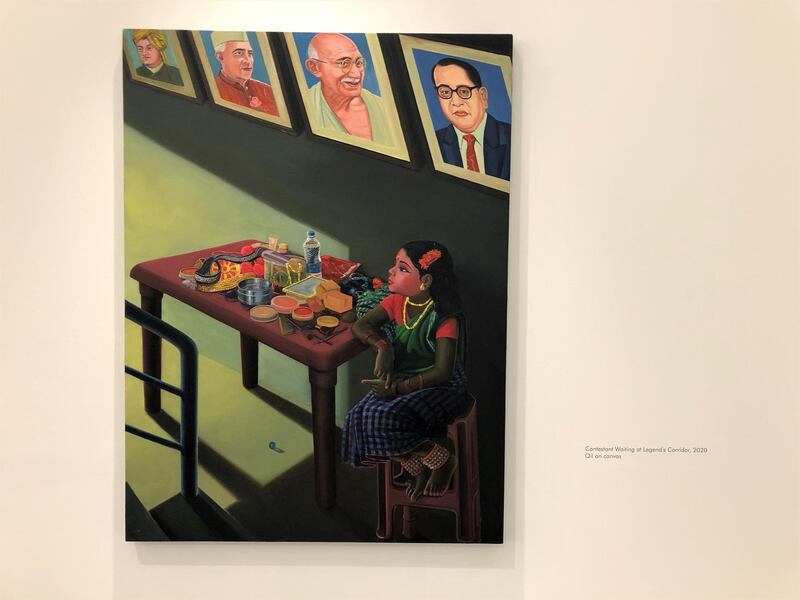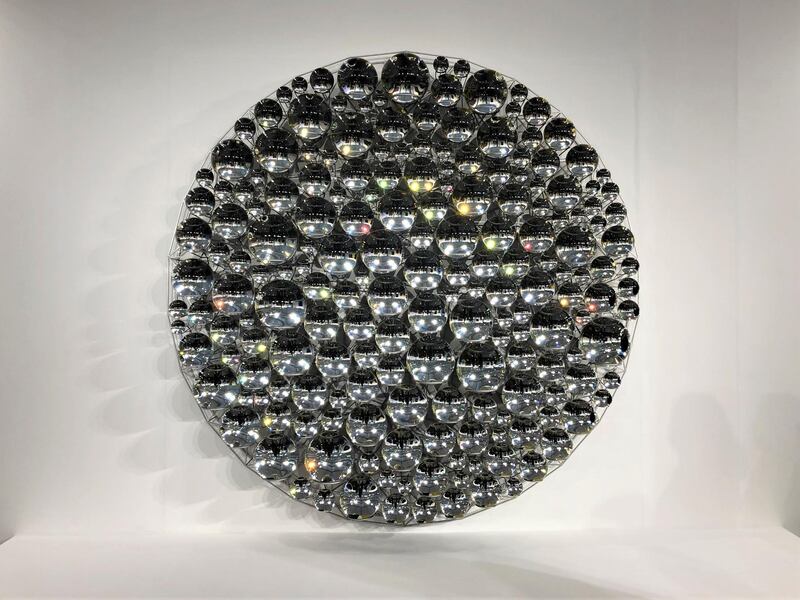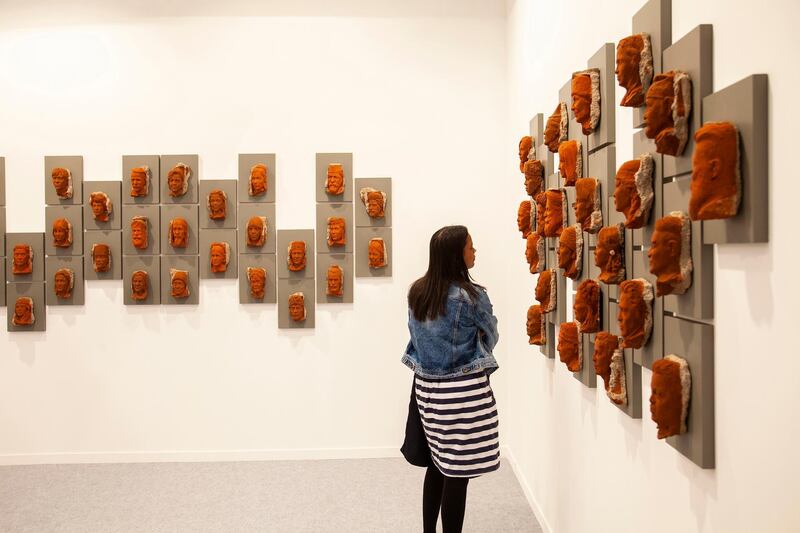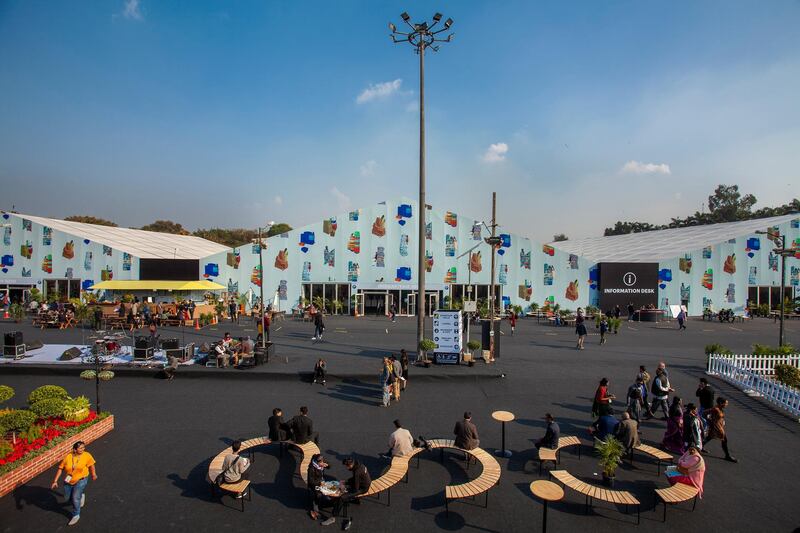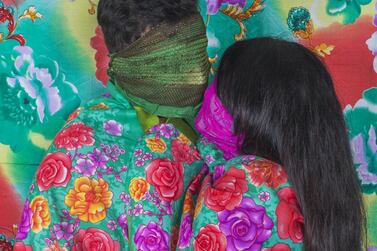The 12th iteration of India Art Fair (IAF) kicked off in New Delhi on January 30 with much excitement, bringing in 65 galleries from more than 20 cities around the world.
By design, the majority of the participating galleries are from within India, primarily from the capital, Mumbai and Kolkata.
Despite strong art initiatives like the Kochi-Muziris Biennale in Kerala, Serendipity Arts Festival in Goa and the number of contemporary art galleries in Mumbai, IAF remains the country’s only official art fair. In the past, other fairs have tried to take off and failed.
“Collectors in Delhi don’t necessarily travel to galleries in Bombay [Mumbai], so it’s the only way we can bridge that distance,” says Priya Jhaveri, co-founder of Mumbai’s Jhaveri Contemporary.
The regional fair also pulled in international blue-chip galleries over the last couple of years, though collectors and visitors remain largely from India.
Linking the old with the new
Across the fair, Indian galleries like Jhaveri’s are creating intergenerational dialogue between artworks by presenting old and new artists together.
"We pair historic works with more contemporary works to sort of blur the lines between modern and contemporary [art], so do you don't necessarily know by looking at the works which one belongs to which period," says Jhaveri, who displayed a work in paper by Anwar Shemza from 1963, next to Rana Begum's luminous spray painting No. 944 Painting from last year.
There's also a stunning textured 1989 painting by Mohan Samant, titled Surya Vaunshi. Features a bold red and purple globe at its centre, the work has figurative shapes formed by wire layered on the surface.
“One of our primary interest as a gallery is to resurrect the visibility or importance of some figures who slipped through the cracks or have been overlooked by the market,” Jhaveri adds, referring to Samant, whose work did not exhibit in India until her death in 2004.
Chatterjee & Lal, also from Mumbai, also followed the "old with the new" route. Only this time, they developed this dialogue further by drawing links between the artists’ subjects and concepts. Specifically, the landscapes of Kashmiri artist Nikhil Chopra and the late eminent Mumbai painter Rustom Siodia, who both infuse elements of the imaginary into the typical realistic Western styles. Siodia’s soft, muted works from the late 1930s to 1940s pair well with Chopra’s sharper visuals of mountains and sky from 2019.
Gallery co-founder Mortimer Chatterjee says he is pleased with the fair’s turnout so far, noting the increased presence of museum groups and institutions in attendance, along with the rise of a new generation of buyers over the last three years.
“There’s a much larger contingent of younger collectors now, which is great,” he says.
Big international galleries are also taking part
While paintings and works-on-paper comprised majority of the works on view, galleries such as Berlin’s neugerriemschneider weren’t afraid to go big, bringing in monumental works by Olafur Eliasson and Ai Weiwei. Though it is only the gallery’s second year at IAF, founder Burkhard Riemschneider is confident the works presented will resonate with Indian audiences.
“Olafur Eliasson’s work has much to with experience and interaction,” he states. “People are so grateful that we brought a piece of which they had never seen an original,” he claims.
Eliasson's circular installation Deep cosmological constant collective comprises glass spheres that change colours when walking around them. For Riemschneider, the gallery's presence in South Asia is to appeal to collectors who may have already built their catalogue of modern and contemporary Indian art, and are looking to venture into Western or international names.
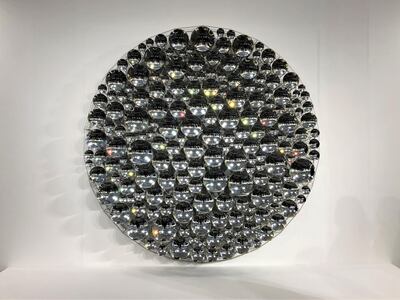
Returning for a third year, blue-chip US gallery David Zwirner offers a mix of sculpture, photography and painting from artists such as Dan Flavin, Wolfgang Tillmans and Harold Ancart. Notable is a site-specific commission, the gallery’s first at IAF, created by Canada’s Marcel Dzama. “We’ve shown a few of his works before, and they’ve had an amazing response,” says director James Green.
Dzama created a blue mural that features his signature fantastical creatures. In what seems to be a curious attempt to catch the eye of Indian collectors, he has appropriated Indian mythology and Bollywood motifs for his works-on-paper.
Green hopes the gallery’s participation at IAF will be a “long-term project”, stating how it has allowed them to meet with local collectors. “We’ve had success with our artists being understood and appreciated here, and we’ve had some strong relationships come through,” he adds.
Vibrant works representing modern India
As with any fair, there are pockets of gaudiness and bazaar-style layouts, but the strength of many regional galleries shines through as they show the depth and breadth of works emerging from India today.
These include Baaraan Ijlal's Hostile Witness series at Shrine Empire's booth. Hailing from Bhopal and now working in Delhi, her surrealist paintings speak of communities caught in struggle as crumbling infrastructure and lack of social security put their livelihoods and homes at risk.
Playing with light and shadow, Kerala-born Ratheesh T. heightens the drama in his canvasses, which often depict lush landscapes and characters in vibrant colours. Galerie Mirchandani + Steinruecke from Bombay have presented a solo booth of his latest works.
Chemould Prescott Road's presentation of Mithu Sen's BYEBYEPRODUCTS BUYBUYPRODUCTS!! attempts to challenge the art market by offering her work for sale in a buy-one-get-one-free format, where collectors can take their pick from the series of 62 drawings on paper. Meanwhile, Experimenter from Kolkata feature an impressive showcase of artists such as Adip Dutta, whose detailed illustrations show melancholic urban landscapes, and Radikha Khimji, who creates abstract mixed media pieces using thread and ink.
The event continues until Sunday, February 2, IAF will host performances by Maya Krishna Rao, Raisa Kabir and Jelili Atiku. There will also be a series of talks and workshops by artists.
More information on the India Art Fair is available on indiaartfair.in
